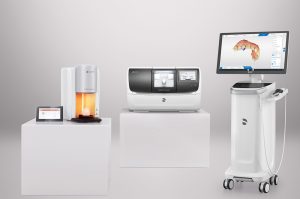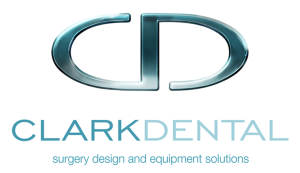Can technology put you ahead of competitors?
Featured Products Promotional FeaturesPosted by: Dental Design 27th June 2023

In today’s dentistry, it’s not only about what you’re offering, but how you’re offering it that often matters. With regards to restorative care, patients are all-too aware of what’s available; they know that they have plenty of options when it comes to choosing a dental provider.
Dentistry has an intense competitive edge, and if two practices have similar offerings, what sets them apart? For some dental practices, it may be a case of improving staff training and education surrounding certain treatments and procedures. For others, it may be investing in technology that can help combat simple inefficiencies that greatly impact treatment outcomes.
It’s no secret that digital dental technologies, since their conception in the 1980s, have accelerated development and innovation within dentistry, completely transforming how care is delivered. Standing out from your competitors isn’t easy in this day and age, but is digital technology the secret to staying at the cutting-edge of the profession, and ahead of the game?
A time-saver
Time is always of the essence, but in the modern-day patients’ expectations have risen dramatically and many of them are seeking exceptional results swiftly. Lengthy waiting times have never been an attractive proposition for patients, and if they can receive quick treatment elsewhere, many of them may prefer that option.
Of all the benefits that digital dentistry presents, time-saving is arguably the most commended. Digital impressions, for instance, can reduce chair time through improved efficiency and accuracy when compared with conventional impression taking.[i] A study[ii] compared the time taken to take an impression with conventional and digital methods; it was found that scanning a single abutment and a full-arch prosthesis digitally took 5 minutes 57 seconds and 20 minutes and 55 seconds respectively. With the conventional impression-taking method, it took around 18 minutes 15 seconds for the single abutment, and between 21 minutes 25 seconds and 30 minutes 25 seconds for the full-arch prosthesis scan.
Even better, some technologies grant dental professionals the flexibility to fabricate prostheses in-house, which can then be placed the very same day. This is a fantastic way to demonstrate the best of what digital dentistry can do; patients will greatly appreciate the reduced number of clinic visits, and being able to go home with their restorations in place.
Clear the mist
A recent study[iii] found that the “unknown element” of dentistry was a common concern among patients. Dental professionals know dentistry like the back of their hand, but from a patient perspective it can be vast and complex, which may prompt patients to be more selective when choosing where to go for treatment. Digital dentistry can help to bridge the gap between patient understanding and what’s actually happening. There are numerous systems that help professionals to engage their patients more successfully, in the form of digital planning and pre-visualisation software, where patients can view the final result before the procedure has even commenced, creating intrigue and a “wow” factor. This also helps to facilitate treatment acceptance rates, as communication can be drastically improved; you can discuss treatment planning goals, alleviate confusion, enhance comfort and compliance.[iv]
Plus, with digital systems you can better manage patient expectations, ensuring that they receive beautiful results that are long-lasting as well as aesthetic. This is because digital technologies can be used to detect oral concerns, like cavities, that could have otherwise disrupted the treatment further down the line.
Make changes where they count
 Kitting out the dental practice with the latest digital advancements isn’t feasible for every business, but some form of technology is still essential. Assessing your existing systems can help you make more conscious investments should you choose to expand your digital capabilities. These advancements not only help to give you an edge over competitors, but also simplify processes for staff members, improving team communication, skillsets and confidence. In addition, you’re granted more flexibility with a digital workflow, as with some systems you can fabricate temporary prostheses in-house within a single appointment. The benefits of a system such as this are countless, but above all, it demonstrates to patients your practice’s professionalism and skill.
Kitting out the dental practice with the latest digital advancements isn’t feasible for every business, but some form of technology is still essential. Assessing your existing systems can help you make more conscious investments should you choose to expand your digital capabilities. These advancements not only help to give you an edge over competitors, but also simplify processes for staff members, improving team communication, skillsets and confidence. In addition, you’re granted more flexibility with a digital workflow, as with some systems you can fabricate temporary prostheses in-house within a single appointment. The benefits of a system such as this are countless, but above all, it demonstrates to patients your practice’s professionalism and skill.
A wise investment
Clark Dental is proud to offer the Primescan and Primemill, with the latest CEREC software for the ultimate digital workflow. With Primescan, one of the most accurate intraoral scanners on the market,[v] you can process more than one million 3D points per second, for ultra-realistic and reliable data. The innovative Primemill unit allows you to produce outstanding chairside restorations, effortlessly. Together, the Primescan and Primemill facilitate a complete in-house restoration workflow, giving you more flexibility to choose when to refer to a dental laboratory. You’ll also save money on lab fees and the costs associated with multiple patient visits.
Digital dentistry is not the future, it’s already here. Adopting these technologies can facilitate an exceptional patient experience and help your business stand out from the crowd, boosting productivity, profitability and, above all, patient satisfaction.
STUART CLARK
MANAGING DIRECTOR CLARK DENTAL

For more information call Clark Dental on 01268 733 146, email info@clarkdental.co.uk or visit www.clarkdental.co.uk
[i] Lee, S.J., Jamjoom, F.Z., Le, T., Radics, A. and Gallucci, G.O. (2021). A clinical study comparing digital scanning and conventional impression making for implant-supported prostheses: A crossover clinical trial. The Journal of Prosthetic Dentistry. [online] Available at: https://www.sciencedirect.com/science/article/abs/pii/S0022391321000287 [Accessed 25 Jul. 2022].
[ii] Patzelt, S.B.M., Lamprinos, C., Stampf, S. and Att, W. (2014). The time efficiency of intraoral scanners. The Journal of the American Dental Association, [online] 145(6), pp.542–551. Available at: https://www.sciencedirect.com/science/article/pii/S0002817714601136 [Accessed 26 Jul. 2022].
[iii] Calladine, H., Currie, C.C. and Penlington, C. (2022). A survey of patients’ concerns about visiting the dentist and how dentists can help. Journal of Oral Rehabilitation, [online] 49(4), pp.414–421. Available at: https://onlinelibrary.wiley.com/doi/full/10.1111/joor.13305 [Accessed 26 Jul. 2022].
[iv] Jafri, Z., Ahmad, N., Sawai, M., Sultan, N. and Bhardwaj, A. (2020). Digital Smile Design-An innovative tool in aesthetic dentistry. Journal of Oral Biology and Craniofacial Research, [online] 10(2), pp.194–198. Available at: https://www.ncbi.nlm.nih.gov/pmc/articles/PMC7193250/ [Accessed 26 Jul. 2022].
[v] Ender, A., Zimmermann, M. and Mehl, A. (2019). Accuracy of complete- and partial-arch impressions of actual intraoral scanning systems in vitro. International Journal of Computerized Dentistry, [online] 22(1), pp.11–19. Available at: https://pubmed.ncbi.nlm.nih.gov/30848250/ [Accessed 25 Jul. 2022].








